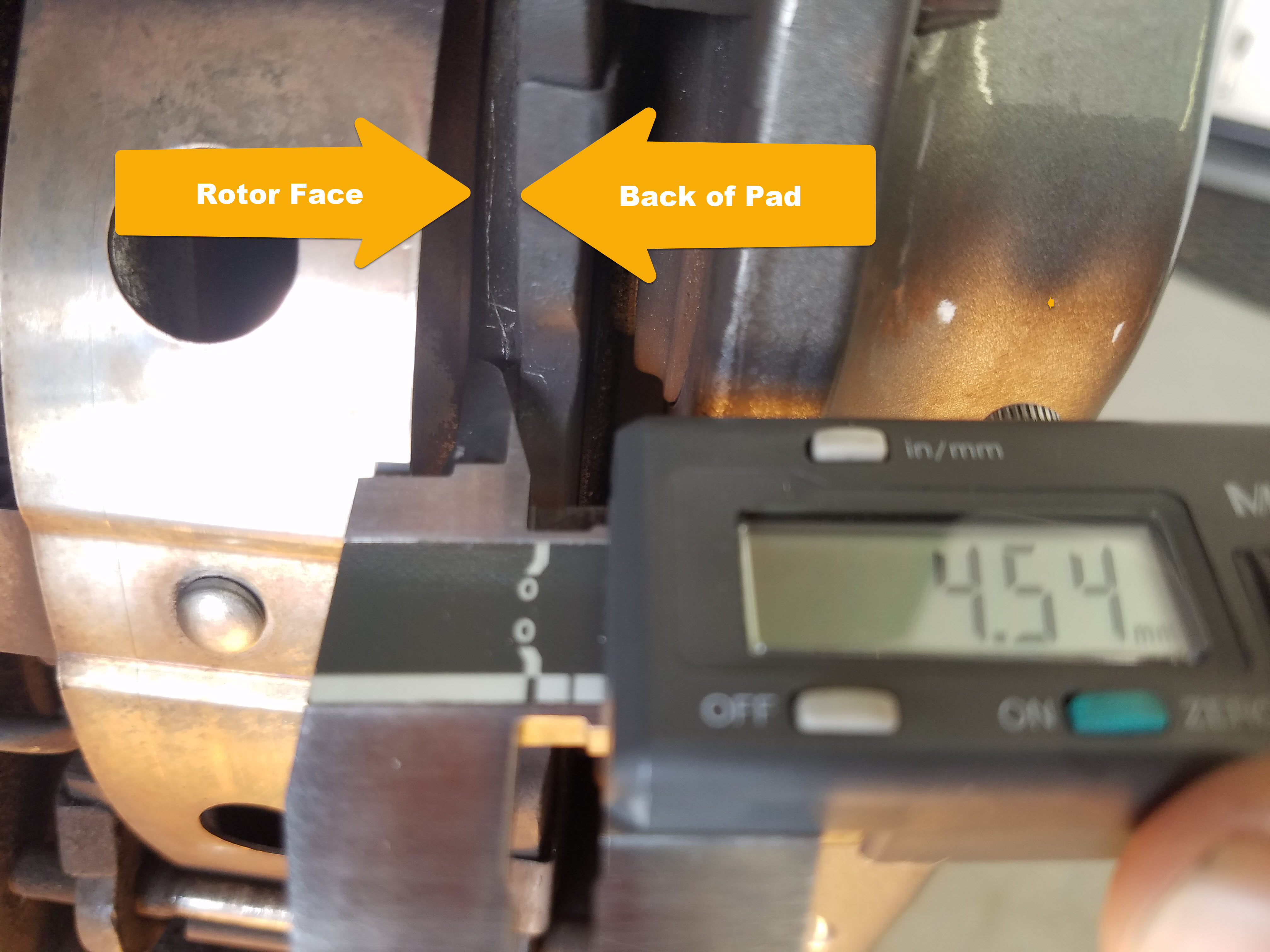Your vehicle’s brake pads are essential for your safety. They’re the key components that help you stop your car efficiently.
But how do you know when it’s time to check their thickness? This guide is here to help you understand the importance of brake pad thickness and how you can check it yourself. You might think your brakes are fine, but ignoring their wear can put you and others at risk.
Imagine the peace of mind knowing your brakes are in top shape every time you drive. Dive into this article to learn how thick brake pads should be, the thickness of new brake pads in millimeters, and the minimum thickness for safe driving. Your safety could depend on it.

Credit: aston1936.com
How Thick Brake Pads Should Be
Brake pads should be at least 3mm thick for safe driving. Regular checks help avoid damage and ensure effective braking. Thin pads can lead to decreased performance and increased wear on other parts.
Ensuring your vehicle’s safety is crucial, and brake pads play a vital role. Knowing how thick they should be is essential for maintaining optimal performance. Regular checks can prevent accidents and ensure a smooth ride. Ideal Brake Pad Thickness Brake pads typically start at about 12 mm when new.
As they wear down, their thickness decreases. Most experts suggest replacing them at around 3 mm. This ensures your brakes function properly and safely. Why Thickness Matters – Stopping Power: Thin pads reduce braking efficiency. This can make stopping difficult.
– Heat Resistance: Thicker pads manage heat better. This prevents brake fade. – Longevity: Thicker pads last longer. Frequent replacements can be avoided. Measuring Brake Pad Thickness You can measure the thickness using a simple gauge. This tool helps you see if your pads need replacement.
Regular checks can save you from unexpected expenses.
How Thick Are New Brake Pads In Mm
New brake pads usually measure between 10 to 12 mm in thickness. Regular checks ensure safety and optimal performance.
New brake pads play a vital role in ensuring your safety on the road. Knowing their thickness is key to maintaining optimal performance. Let’s explore how thick new brake pads typically are and what you should expect. Standard Thickness of New Brake Pads The thickness of new brake pads can vary depending on the type.
Here’s a quick guide: – Passenger Cars: Generally, new pads measure around 10 to 12 mm. This ensures efficient braking. – Light Trucks: These often have pads measuring about 12 to 15 mm. They require more durability. – Heavy-Duty Vehicles: Expect pads to be around 15 to 20 mm thick.
They’re built for intense use. Importance of Thickness Brake pad thickness impacts vehicle safety. Thicker pads offer better performance. They provide more stopping power. As pads wear down, performance decreases. It’s crucial to monitor this. Materials Affecting Thickness Different materials influence pad thickness.
Here’s how: – Organic: These pads are usually thicker. They offer a softer feel. – Semi-metallic: Often thinner, they provide better heat resistance. – Ceramic: Typically in the middle range, balancing performance and comfort. Understanding these aspects helps in selecting the right brake pads.
Keeping a check on brake pad thickness ensures safe driving and longevity of your vehicle’s braking system.
What Is The Minimum Brake Pad Thickness
Checking brake pad thickness is essential for safe driving. The minimum thickness should be around 3 millimeters. Inspect regularly to ensure your brake pads provide adequate stopping power.
Checking your brake pads is crucial for safe driving. The thickness of brake pads affects stopping power. Knowing the minimum thickness helps ensure your brakes work effectively. Let’s dive into what you need to know. Minimum Brake Pad Thickness Understanding the minimum thickness is important.
This ensures your vehicle stops safely. Brake pads wear down with use. Here’s what you should know: – Standard measurement: Typically, the minimum thickness is 3 millimeters. Anything less may impair braking. – Visual inspection: Regularly check brake pads visually.
Look for wear and tear. – Professional advice: Consult a mechanic if unsure. They can measure pad thickness accurately. Why Brake Pad Thickness Matters Brake pad thickness is vital for your safety. Thin pads may result in longer stopping distances.
This is risky, especially in emergencies. Keeping pads within the recommended thickness ensures optimal braking performance. Regular checks can prevent accidents and costly repairs.
.jpg)
Credit: www.pca.org
Conclusion
Regular brake pad checks ensure safety on the road. New brake pads usually measure between 8 to 12 mm thick. Replace them if they wear down to 3 mm. Thin pads can compromise braking performance. Always prioritize your vehicle’s maintenance.
Regular inspections prevent costly repairs and accidents. Use a brake pad gauge for accurate measurements. Consult a professional if unsure about pad thickness. Staying informed keeps you and others safe. Remember, well-maintained brakes are essential for safe driving.
